SD8 English Language Learning Team
Emily Mather | District Principal, Inclusive Education
Holly McRann | ELL Teacher, Nelson Schools
Sonya Zimmer | ELL Teacher, Creston Schools
Language Acquisition

Language Acquisition Stages
Stage I - Pre-production, Silent/Receptive: Student may be silent as they are listening and building knowledge. This process may last 6+ weeks depending on student. Student will be observing, listening, and gesturing - limited comprehension social exchanges subject-specific words common phrases and expressions observe and listen rather than produce language, understand better when visual supports, nonverbal communication.
Stage II - Early Production: Student starts to use single words, with focus still on listening and may use language with errors. limited oral or written comprehension, key words and familiar phrases, short, simple sentences in the present tense, memorize language, present-tense verbs, overgeneralize “s” and “ed”, receptive understanding, understand texts with visual support.
Stage III - Speech Emergence: Student is starting to experiment with saying sentences with some grammatical errors but errors decrease over time as sentence length increase. good comprehension, especially in social interactions, simple sentences and may begin to add detail, ask and answer questions, make frequent grammar, word-use, and pronunciation errors, not understand wordplay, brief conversation, complex texts with visual support.
Stage IV - Intermediate: Student is able to speak in fluent sentences using social language and explain thoughts using higher level language. excellent comprehension, good comprehension, few grammatical errors, more complex sentence structures, ask questions, common metaphors and idiomatic, translate between English and their home language.
Stage V - Advanced Fluency: Fluent and confident with second language understand and use a broad range of vocabulary in a variety of contexts, range of idiomatic expressions and cultural references, understand implied humour and use figurative language, similar level of language proficiency and academic achievement as peers whose first language is English.

Tips for Teaching Writing to ELL Students
ELL/Teaching Relevance
While teaching students how to communicate through writing, it prepares them to write in both academic and professional formats. Direct writing instruction enhances language skills, communication, cultural expression, academic success, critical thinking, and career readiness.
Ensure students understand the purpose of their tasks.
- Help students generate ideas for their writing.
- Assist students in organizing their thoughts and using specific language patterns.
- Teach students how to combine sentences for more complex language.
- Encourage varied vocabulary usage and introduce synonyms.
- Focus on pronunciation when students present their work.
Tips for Teaching Vocabulary
ELL/Teaching Relevance
Vocabulary instruction is important to all learners as it enhances language acquisition, reading and writing abilities, communication skills, and cultural understanding. Students achieve academically and improve English language acquisition.
- Pre-teach vocabulary using various activities.
- Explain meanings with student-friendly definitions and examples.
- Focus on cognates for word connections.
- Scaffold learning with graphic organizers.
- Review vocabulary daily on a word wall.
- Label drawings and pictures for better understanding.
- Use audio books, computers, and television to expose students to vocabulary.
- Teach words in context and discuss literal vs. figurative meanings.
Classroom Considerations

Creating a Culturally Relevant Classroom
An inclusive learning environment is created by utilizing all language(s) that the student is able to understand and speak, including their home-language. Multilingual students thrive in a classroom where learning is holistic in nature and various resources are used to develop and improve communication.
Students report that writing in both languages supports learning because writing in both languages helps them think of what the words mean because they are processing language in their first language. (Cummings, et al, 2015). An inclusive learning environment is created by utilizing all language(s) that the student is able to understand and speak, including their home-language. Multilingual students thrive in a classroom where learning is holistic in nature and various resources are used to develop and improve communication.
Students report that writing in both languages supports learning because writing in both languages helps them think of what the words mean because they are processing language in their first language. (Cummings, et al, 2015). Connect students cultural identity to the learning environment by fostering students views and promote equity and academic success among diverse cultural backgrounds.
- Recognizing biases, instilling values by integrating culture into teaching approaches and exploring cultural learning and seeking feedback to provide culturally relevant material in classrooms.
- Incorporating Indigenous ways of Knowing by inviting and learning from Indigenous knowledge, and redefining expertise based on land connections and community relationships.
Classroom Application of Culturally Relevant Practice
ELL/Teaching Relevance
Choose a classroom activity that supports cultural awareness, inclusive and diversity. Students will celebrate their own cultural heritage and develop appreciation for diverse cultures in the classroom.
Students can explore and share aspects of their own cultural background or a culture they are interested in. The goal is to create a project that highlights the richness and uniqueness of various cultures, fostering a sense of community and respect for diversity. Students select a culture that holds personal significance to them. They then research on the chosen culture, focusing on traditions, customs, celebrations, language, cuisine, music, art, and any other aspects that define its identity. They then share their findings on a platform of choice leading to a presentation. The final product may be a poster, PowerPoint, voice recording, video, portfolio.
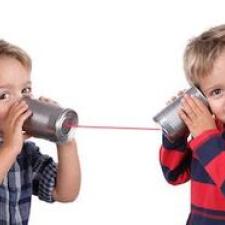
Trans-language Learning
WHY Trans-language Learning
An inclusive learning environment is created by utilizing all language(s) that the student is able to understand and speak, including their home-language. Multilingual students thrive in a classroom where learning is holistic in nature and various resources are used to develop and improve communication.
Students report that writing in both languages supports learning because writing in both languages helps them think of what the words mean because they are processing language in their first language. (Cummings, et al, 2015).
Home Language/Trans-language Classroom Ideas
ELL/Teaching Relevance
Trans-languaging utilizes a students full linguistic repertoire. It can develop language, increase confidence and comprehension. It also develops inclusive practice, supports academic success, and enriches the learning experience of all learners.
Newcomers can create a poster or a story of their transition between their previous country to their new country. When adding informational text the student can write in English and also in their home language. This can support other newcomers transition to the school in the future. (Cummings, et al, 2015).
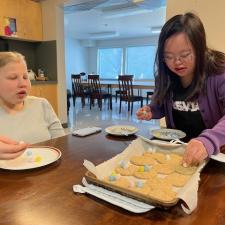
Universal Design for Learning
WHY UDL
Universal Design for Learning aims to educate students in a manner that supports their learning competencies and abilities, regardless of their learning styles, By utilizing a flexible learning environment learning can be customized to meet the diverse needs of students.
UDL reflects learning preferences, strengths, and challenges, by using various ways of representing, engaging, and expressing aquired learning. A teacher can alter the way they present information and provide different ways for students to engage with curriculum, and provide various choice for students to demonstrate their understanding. UDL promotes inclusivity, and promotes learning outcomes.
Elements of Universal Design for Learning (UDL)
- Understand the diverse needs and abilities of students and also the unique learning styles, strengths, and challenges of your students.
- Establish clear and flexible curricular objectives that cater to different learning styles such as visual, auditory, and kinesthetic.
- Increase learning engagement by providing students with choices in how they demonstrate learning. The choices can cater to different interests and abilities.
- Allow for different modes of assessment such as written assignments, presentations, projects, or verbal explanations.
- Incorporate technology and assistive devices such as text to speech, graphic organizers, and multimedia to support students.
Foster a positive and inclusive classroom by encourage collaboration and peer support. -
Provide positive and constructive feedback to students on their progress and learning outcomes using self-reflection/assessment practices to develop learning outcomes.
UDL Classroom Ideas
ELL/Teaching Relevance
By practising UDL teaching in your classroom, you create a supportive, inclusive, equitable, and personalized learning environment for ELLs and all students to increase engagement, develop essential skills, and achieve academic success.
- Create role-playing situations where students use specific language and grammar skills.
- Play games where students have to construct sentences that match a given language function.
- Provide writing prompts that require students to use a particular language function in their writing. Encourage them to incorporate the relevant grammar rules while expressing their ideas.
- Facilitate group discussions on various topics. Encourage students to use appropriate grammar forms to convey their thoughts effectively.
- Create worksheets or activities where students have to match specific language functions with the corresponding grammar structures. This can help solidify their understanding of how functions and grammar work together.
- Discuss real-life scenarios where students need to use language skills to work through a situation.
- Organize peer feedback opportunities where students can practice using different language skills and grammar use during conversation. This fosters collaborative learning and improvement.
Differentiated Instruction
WHY Differentiated Instruction
Differentiated instruction is a flexible teaching practice that supports all learners by accommodating learning needs by designing learning according to student interest, learning readiness, and needs. Teachers meet the needs of each student by adjusting instruction by providing a range of learning activities and assessment techniques with the student in mind. To apply DI in the classroom environment it is essential to know and understand language proficiency, background, and learning style and set high expectations. To implement it you can access visual aids, hands-on activities, and peer collaboration, to cater to diverse learning preferences and collaborate with ELL coordinators, counsellors, and other professionals for resources and insight on ELL learning.
Differentiated Instruction Classroom Ideas
ELL/Teaching Relevance: Practising differentiated instruction engages ELL and all students with varying language abilities, learning styles, and interests. It supports vocabulary acquisition and understanding in context while providing a supportive and inclusive classroom environment.
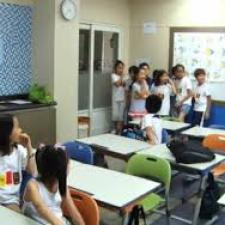
A differentiated activity I love to play in my classroom is called, Four Corners Vocabulary. This is done by selecting 4 vocabulary words from a lesson and then assign that word to each corner of the classroom. Students can choose to provide visual cues for each word, such as pictures or symbols, read aloud the words and their definitions, physically move to the corner that corresponds to the vocabulary word they find interesting, or students discuss with a partner why they chose a specific word and how it relates to the lesson content. To support ELL learners, I simplify the explanation of the word, ask students to use it in a sentence, or pair students to support and lead each other.
Multimodal Learning
WHY Multimodal Learning
Providing student learning through multiple sensory channels is multimodal learning. Students can learn through various modes such as visual, auditory, kinesthetic, and tactile, to understand and transfer information into learning. Students all have learning preferences and by incorporating student senses, learning improves.
Multimodal Classroom Ideas
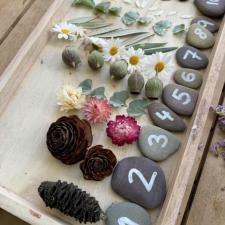
ELL/Teaching Relevance
ELLs may face challenges with comprehension through traditional learning methods. Using learning supports such as visual representations, auditory cues, physical movement, and other approaches, we support and enhance the learning experience for for all students by using using visual representations, images, diagrams, and videos, to support ELLs and support the language barrier and retention of material, using listening exercises, audio recordings, and interactive discussions, to improve auditory learning. By focusing on pronunciation, intonation, and conversational skills. By offering a choice or entry point of learning teachers can accommodate varying learning styles and language abilities to suit their learning needs.
Picture Word Match - Fruit and Vegetable Vocabulary
Photocopy picture cards of various fruit and vegetables (onion, strawberry, kiwi, grapes, cucumber, peas, carrots, ect). Then create matching vocabulary words in English. Proceed by showing the picture cards to the students and having them name the object in English (visual), then say the vocabulary words outloud while showing the cards (auditory), have student match the pictures with the word cards (kinestetic). To support ELL students, you can pair students for support or adjust the expectations such as asking the higher groups to describe the fruit or vegetables.

The Power of Feedback
WHY: Feedback
Feedback plays an imperative role in the learning and success of all students, however our ELLs require specific, positive and constructive feedback to develop their academic growth and language development. Teachers can use effective feedback to gain knowledge of student abilities, background knowledge, and next steps for learning. By providing substantive feedback that is detailed and balanced between positive and corrective feedback can create a balanced learning environment to inspire a growth mindset for students. When we provide specific and targeted feedback by designing appropriate goals for learning growth and encouraging students to self evaluate, we build student performance and learning ownership. Within this structure of feedback we must remember to provide this feedback in a timely manner to ensure students are engaged and focused on their learning goals and next steps. Specific feedback for ELLs centers around their unique needs. To improve feedback in this area we need to ensure it is tailored to be balanced, differentiated and supportive. Balanced for ELLs centers around language acquisition, appropriateness, and accuracy. Being specific in feedback through differentiated practices by considering where the student made errors, were they content or constructive in nature. Our ELLs need a supportive environment that dives into language acquisition and helps students build on their knowledge.
Classroom Ideas for Providing Feedback
ELL/Teaching Relevance
Providing direct and appropriate feedback to ELLs is essential because it supports their language development in all areas, speaking, listening, reading and writing. It can build confidence and incorporates a culturally diverse environment to enhance learning and academic achievement. The main goal of feedback for ELLs is to improve communication skills in both academic and social situations to prepare our youth for their future. We can empower them to be prepared for the next steps and challenges in life and give them the opportunity to succeed in all levels.
After a writing activity where student have written paragraphs about favorite sport, teachers may provide feedback with the following elements included:
- Celebrate the students effort and strengths in writing sample.
Outline specific areas of improvement (adding descriptive language).
Provide next step suggestions for enhancing the writing, like using more adjectives. - Provide encouragement that creates motivation for improving and celebrating their progress.
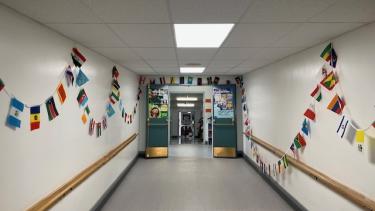
Resources
ELL Policy and Guidelines
The BC Ministry Standards, including assessment matrices to outline the level and skills for English Language Learner. By providing standards/matrices for reading, writing, cultural background and oral language we use a common language and assessment tool for identifying and communicating language proficiency fostering explicit transparency and consistency between school divisions and the ministry. They can also be a tool to communicate progress between parents and facilitate communication.
ELL Policy Guidelines
The ELL Policy and Guidelines provides a framework and guideline for assessment standards required by the the B.C. Ministry. It provides an outline for policy, planning and services (including assessment and AIP requirements), accountability and roles and responsibilities.
ELL Planning Tool
The ELL planning tool is an at a glance document that provides the essential demographics, assessment level, and educational goals for each identified ELL student. This ensures ELL students progress is tracked accordingly and appropriate goals and services are in place to support ELL student learning needs.
ELL Assessment Tips
Learn Alberta provides a framework for equitably assessing ELL students reading, listening, writing and oral language skills.
https://www.learnalberta.ca/content/eslapb/assessment_tips.html
Assessment Tools
CMGlobal English
A formal/standardized/culturally normed referenced assessment that measures language acquisition of speaking, listening, reading, grammar). “The CMGE assessment is a reliable and valid assessment tool for educators. The assessments are a series of language tests, designed and normed by Canadian ELL experts. The assessments provide an accurate snapshot in time of English proficiency. The primary, intermediate, and secondary assessments are consistent and the leveled results are aligned with provincial and state standards.The assessments and their multiple forms were field tested with hundreds of international and domestic students. Raw scores were statistically analyzed at the University of British Columbia and the correlations across tests and forms were determined to be excellent.” (CMGlobal, 2023).
CMGlobal English, ttps://cmglobalenglish.com
Tools and Technology
Utilizing technology in the classroom can support ELL students by remembering terms, facts and recalling information. It also supplements understanding of content and explains ideas using pictures and words. Students are able to apply new situations to their learning by organizing important information and make decisions.
Duolingo: http://www.duolingo.com/
LingoHut: http://www.lingohut.com/
Prodigy English: https://prodigygame.com/main-en/prodigy-english/
SpeakingPal: https://www.speakingpal.com/
Quizlet: https://quizlet.com/teachers
Kahoot: https://kahoot.com/home/mobile-app/
ESL Video: https://www.eslvideo.com/
Visual Dictionary Online: http://www.visualdictionaryonline.com/
Starfall: https://www.starfall.com/h/
Resources for Teaching Writing and Vocabulary
iColorin colorado!: Check out "Oral Language Development and ELLs: 5 Challenges and Solutions" by Lindsay Moses Guccione for practical solutions and strategies for oral language development. https://www.colorincolorado.org/article/oral-language-development-and-ells-5-challenges-and-solutions
Teaching Channel: Watch "The Writing Recipe: Essay Structure for ELL" and "Writing a Paragraph with High School ELLs" for visual guides on teaching writing effectively. https://www.google.com/url?sa=t&source=web&rct=j&opi=89978449&url=https://www.youtube.com/watch%3Fv%3D19cgV6WciRQ&ved=2ahUKEwiN5Iz0mf2FAxXTEDQIHdfhBbUQwqsBegQIDxAF&usg=AOvVaw2jm2KWOC0p6NXsdGO1eftI
Reading Rockets: Visit their website for articles and resources on vocabulary development for English Language Learners. https://www.readingrockets.org/topics/phonological-and-phonemic-awareness
ESL Teaching Road Map: Utilize their authentic speaking activities and ESL podcasts for engaging language learning experiences. https://simplyieva.teachable.com/courses/397297/lectures/10988887
Colorin Colorado: Visit their website for articles on using cognates for comprehension in English and selecting vocabulary words for ELLs. https://www.colorincolorado.org/article/using-cognates
Learn Alberta: Access writing samples and videos to support teaching writing and vocabulary development in ELLs. https://www.learnalberta.ca/content/eslapb/writing_samples.html
Additional Websites
ABCya! Games (K-5): abcya.com
Games to Learn English: https://gamestolearnenglish.com
Unite for Literacy – narration in many languages: uniteforliteracy.com
World Stories - from around the world in 31 languages: worldstories.org.uk
Storybooks Canada – dual language books: storybookscanada.ca
Janis’s ESL Links – activities by topic janis-esl.issbc.org/esl-links/
ESL Kids Games – online games, activities, printables eslkidsgames.com
IXL English Language Arts – literacy skills by grade level (K-12) ca.ixl.com/ela
Globe Trottin’ Kids – county and cultural info: www.globetrottinkids.com/
Kids World Travel Guide
– learn about countries: www.kids-world-travel-guide.com/
Once Upon a Picture – images with prompts: www.onceuponapicture.co.uk
ESL Video - short videos, levelled, with comprehension questions: eslvideo.com
News in Levels – World News for language learners newsinlevels.com
Time for Kids - news stories for kids by grade level: www.timeforkids.com
Common Lit - free texts Grade 3 – 12 with translation: www.commonlit.org
ESL Bits – listening and reading comprehension for ELLs: esl-bits.net
Free Rice – Educational trivia game play.freerice.com/categories
World Book Online - research with translation: www.worldbookonline.com
Professional Reading: 7 Steps to a Language-Rich, Interactive Classroom
7 Steps to a Language-Rich, Interactive Classroom
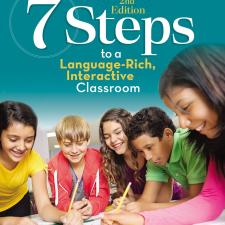
Seidlitz, J., & Perryman, B. (n.d.). 7 steps to a language-rich interactive classroom (2nd ed.). Seidlitz Education.
Step 1: Teach students what to say when they don't know what to say
Provide students with alternative responses to saying "I don't know" and create a classroom routine around their use.
What to say instead of "I don't know."
- May I please have some more information?
- May I please have some time to think?
- Would you please repeat the question?
- Where can I find more information about that?
- May I ask a friend for help?
Step 2: Have Students Speak in Complete Sentences
"Students must have frequent experiences using formal language; thus, it is critical to provide ample opportunities in class that require them to use complete sentences...students learn how to develop their thought and use formal language structures, both orally and in writing...giving them a passport to clear communication in both the academic and professional worlds."
General Sentence Stems Supporting the use of Complete Sentences
General:
I think..., I can infer..., I agree/disagree with ____ because..., I would like to add..., I can connect (reading, student idea, previous learning) to..., What I heard you say is..., I predict..., I can infer____from..., The author states, which makes me think..., The text evidence on page ____ proves..., I can connect___ to ____ because... (text to self, text to text, text to world).
Science:
I observed..., The data/evidence shows..., The problem can be solved by..., The cause/effect of ___ is..., Based on the data/evidence a conclusion I can make is..., This reminds me of....
Social Studies:
I predict..., I can infer ___ because..., The similarities/differences between ___ and ____ are..., Evidence of ____ is shown in the (source) by...,
Math:
The first step in solving the problem is..., My answer is reasonable because..., The strategy I used to solve for _____ was..., I agree/disagree with ____'s answer because..., I learned....
General sentence steps for your classroom may look different based on the content and grade level you teach.
Step 3: Randomize and rotate when calling on students.
Randomizing - Create a bank of names (index cards, popsicle sticks) with class names and randomly pull from that bank when calling on students. Randomizing promotes higher student engagement and more accurate assessment of student understanding. When randomizing, the questioning may look like this:
- Ask the question. (Ask students not to raise hands)
- Pause (Think time)
- Select a student to respond using a random selection system. (Drawing index cards)
Rotating - Sometimes it is helpful to have an open discussion with your class without randomization techniques. Using the rotating system from the class list can be a fair way to ensure everyone participates in the discussion.
Ideas for Randomization:
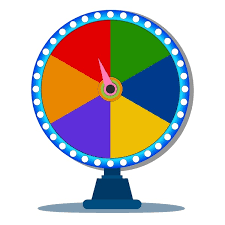
- Use index cards
- Organize numbered heads together - Group students in 4-5/group. Number each group member 1-5. Ask a question, and then randomly select one of the numbers to respond.
- Hold a deck of cards - Hand out a card to each student, calling out any of the following: red, black, spades, hearts, diamonds, clubs, face cards, or certain numbers.
- Designate categories - Assign a category or topic to a group of students.
- Place colored stickers on desks - Ask all the red, blues, greens, yellows, ect to respond.
Step 4: Use total response signals to check for understanding
The total response system are cue students use to communicate if they are ready to respond to a question or understand the academic content.
Total - Total response signals include everyone in the class.
Response - Every student will reflect and think about their response. After the teacher asks a question, students be given time to reflect on their thoughts and decide when they are ready to respond.
Signal - Once students are prepared to respond, they provide a clear signal to the teacher that the student is ready to respond.
Types of Response Signals

Written Response - Hold up paper or notebook, whiteboards, answer on index cards.
Ready Response - Hands up when ready, hands down when ready, thinkers chin, stand when ready, sit when ready, put your pen on your paper when ready to write, put your pen down when finished writing, all eyes on teacher, head down.
Making Choices - Open hand/closed hand, thumbs up/down, pens up/down, number wheels, colored cards, move to a corner (agree/disagree), letter number choice cards.
Ranking - Rank with your fingers, line up according to response, knocking/clapping/cheering.
Step 5: Use visuals and vocabulary strategies that support your objectives
Visuals - Using visuals increases students' ability to understand academic material. (Photos, maps, drawings, movie clips, graphic organizers, story maps, Venn diagrams, spider maps, t-charts)
Marzano's Six Step Vocabulary Approach
Marzano, R. J. (2004). Building background knowledge for academic achievement: Research on what works in schools. ASCD.
Describe - Teachers give a description/explanation of the word including meaning, prefixes, suffixes and root word (morphology)
Describe - Teachers ask students to describe vocabulary words using their own words. Teacher checks in for understanding.
Draw - Students draw the interpretation of the new vocabulary word.
Do - Give students extra practice with the news word including prefixes, suffixes, synonyms, antonyms, related words and visuals.
Discuss - Discuss new vocabulary words in groups.
Play - Games may include Jeopardy, Wordo, Charades, Pictionary, Scrabble, ect.
Step 6: Have students participate in structured conversations.
Having students participate in structured conversations using specific language about a defined topic is defined as structured conversations. When the class participates in structured conversations there is an enhanced understanding of academic content. A strategy to implement structured conversations into your instruction is through QSSSA (question, signal, stem, share, assess).
QSSSA
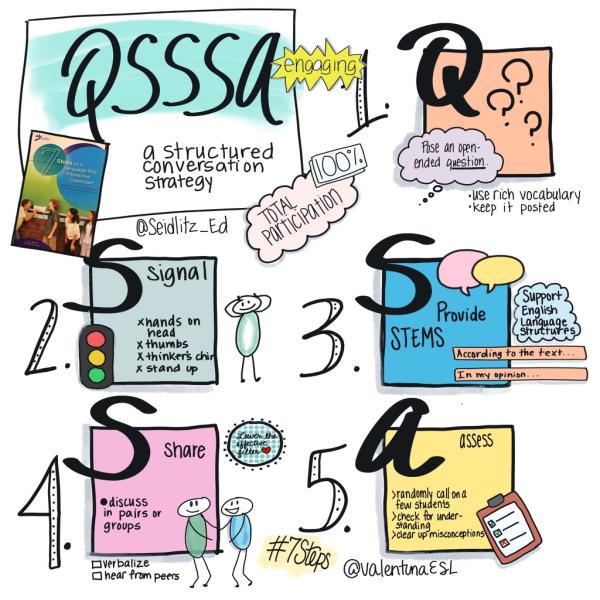
- Question - Ask the question pertaining to the content.
- Signal - Provide a way to indicate readiness.
- Stem - Provide students with a sentence stem to respond to the question. Wait for all students to show the signal.
- Share - Using the sentence stem, students respond with a peer.
- Assess - The teacher randomly checks in by calling on individual students.
Example - Elementary Language Arts
- Signal - Raise your hand when ready to respond
- Stem - The main idea is...
- Share - Inside/out circle
- Assess - Randomize and rotate with responses with whole group
Step 7: Have students participate in structured reading activities
Structured Reading Activities
When students read we want them to apply strategies in order to makes sense and create meaning from what they read.
Strategies
Somebody-Wanted-But-So: During or after reading students summarize and gain an understanding of the main idea, conflict and resolution.
| Somebody | Wanted | But | So |
| Big bad wolf | Pigs for dinner | They hid in the brick house | Tried to go down the chimney to get them. |
MacOn, B., Bewell, D., & Vogt, M. (1991). Graphic organizers: A resource for teachers. Crystal Springs Books.
